Water: it's not a resource, it's a living being.
Introduction
Issue at hand
The Brooklyn Navy Yard faces challenges related to the urban water cycle. Located along the East River, it is exposed to tidal fluctuations, heavy rainfall, and rising sea levels, creating risks of flooding and overloading New York City’s combined sewer system. Much of the stormwater mixes with wastewater, resulting in contaminated discharges into the river during storms. Additionally, the Navy Yard’s hard, impermeable surfaces limit natural infiltration, disrupting the hydrological cycle and increasing dependence on gray infrastructure that lacks resilience. These conditions call for solutions that reintroduce water as a visible, clean, and active resource within the urban landscape.
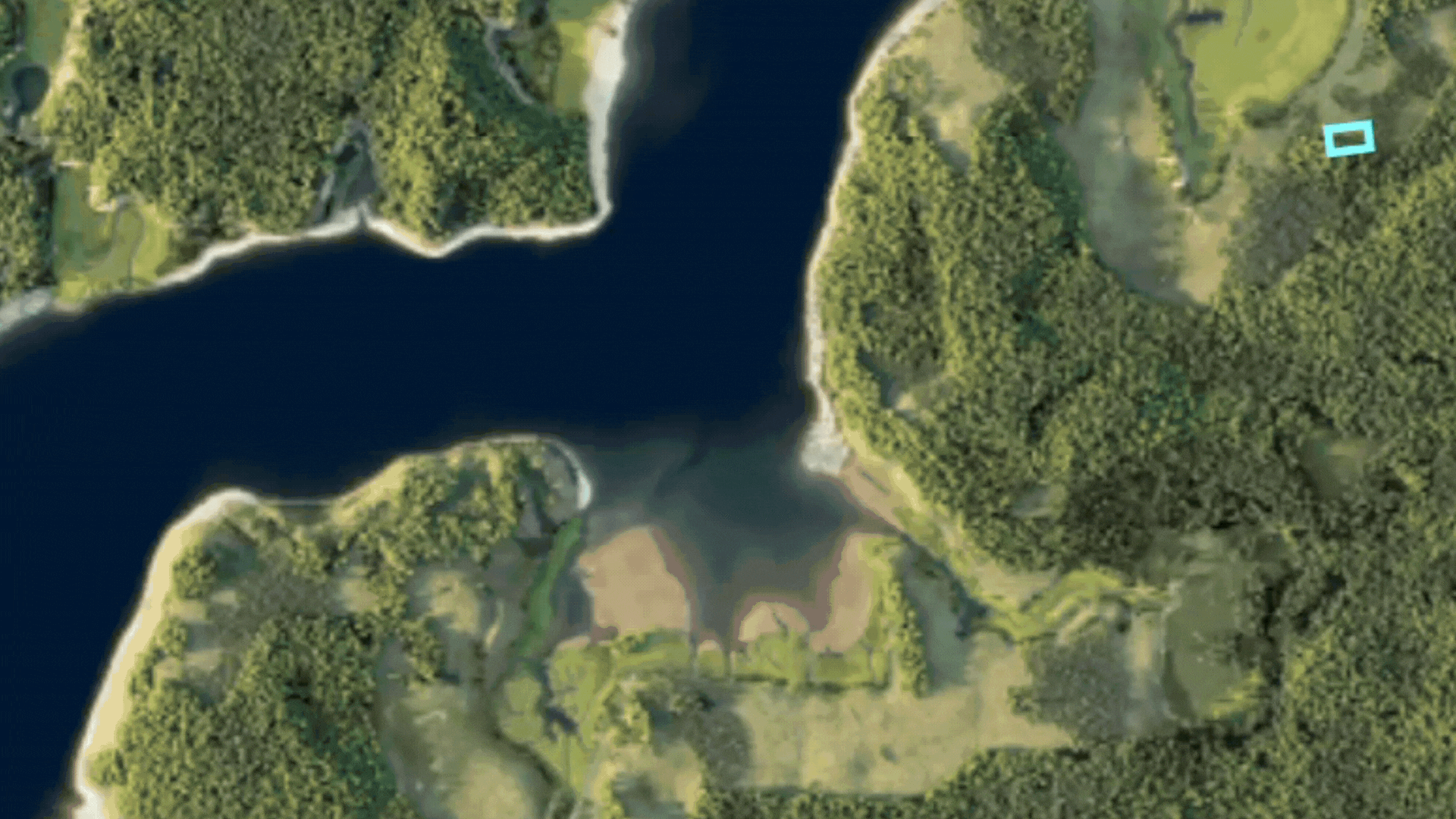
GIF Elaborated by CO-YA-1 Team.
Water Cycle
These days in big cities like New York, the water cycle is completely broken. The city is covered in concrete, which blocks water from soaking into the ground naturally. When it rains, that water should be refilling underground aquifers and nourishing wetlands. Instead, it all just runs off the surface, which also overwhelms the sewer systems, causing flooding and sewage overflows. Additionally, The fresh water that should be stored and filtered gets washed away downstream, never making it back to the local environment. So the city ends up wasting this precious resource while still dealing with droughts and pollution. The cycle isn’t circular anymore, it’s more like a constant leak that throws both nature and city life out of balance.
Colombian biodiversity
Highland Tropical Wetland (Páramo)
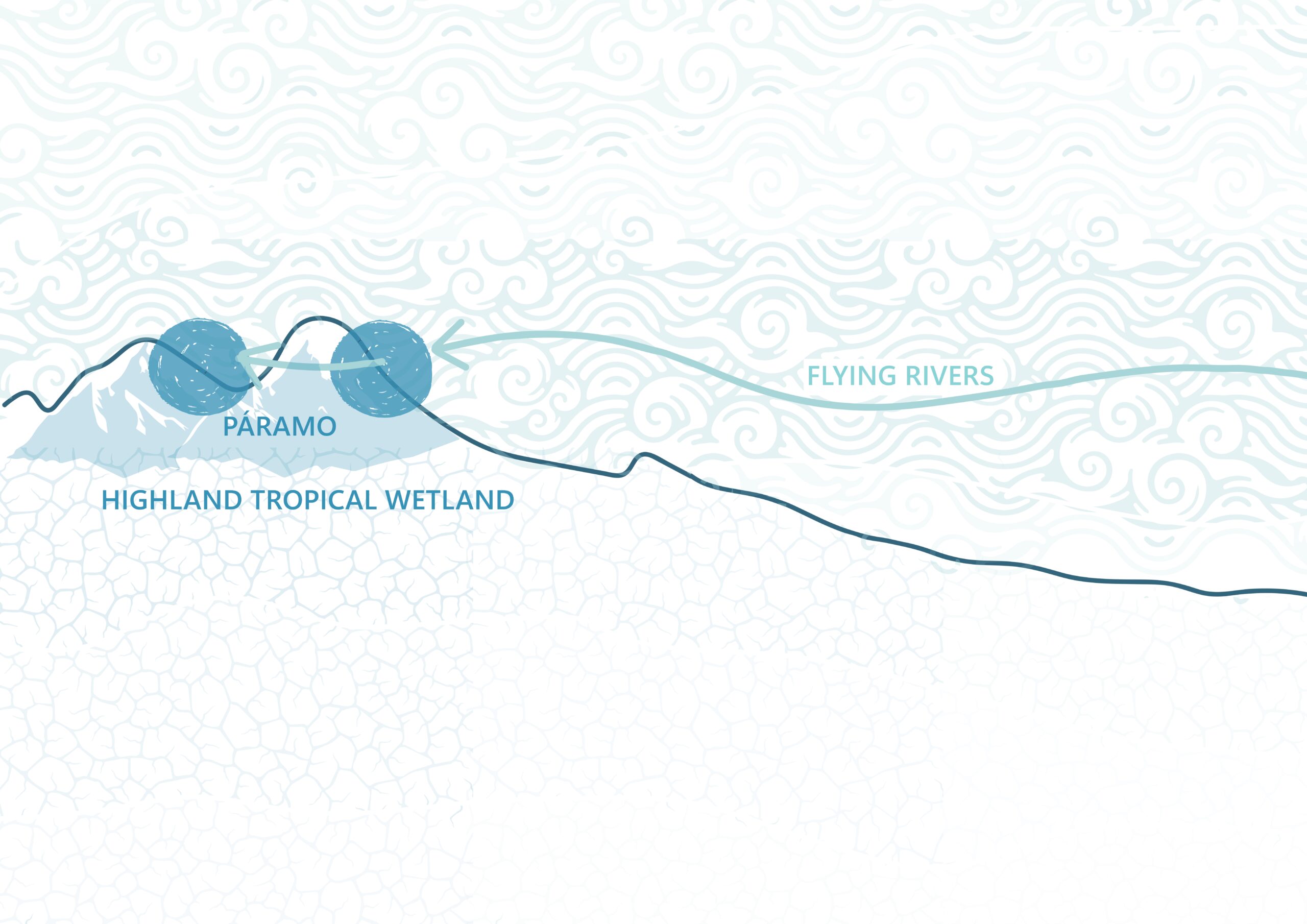
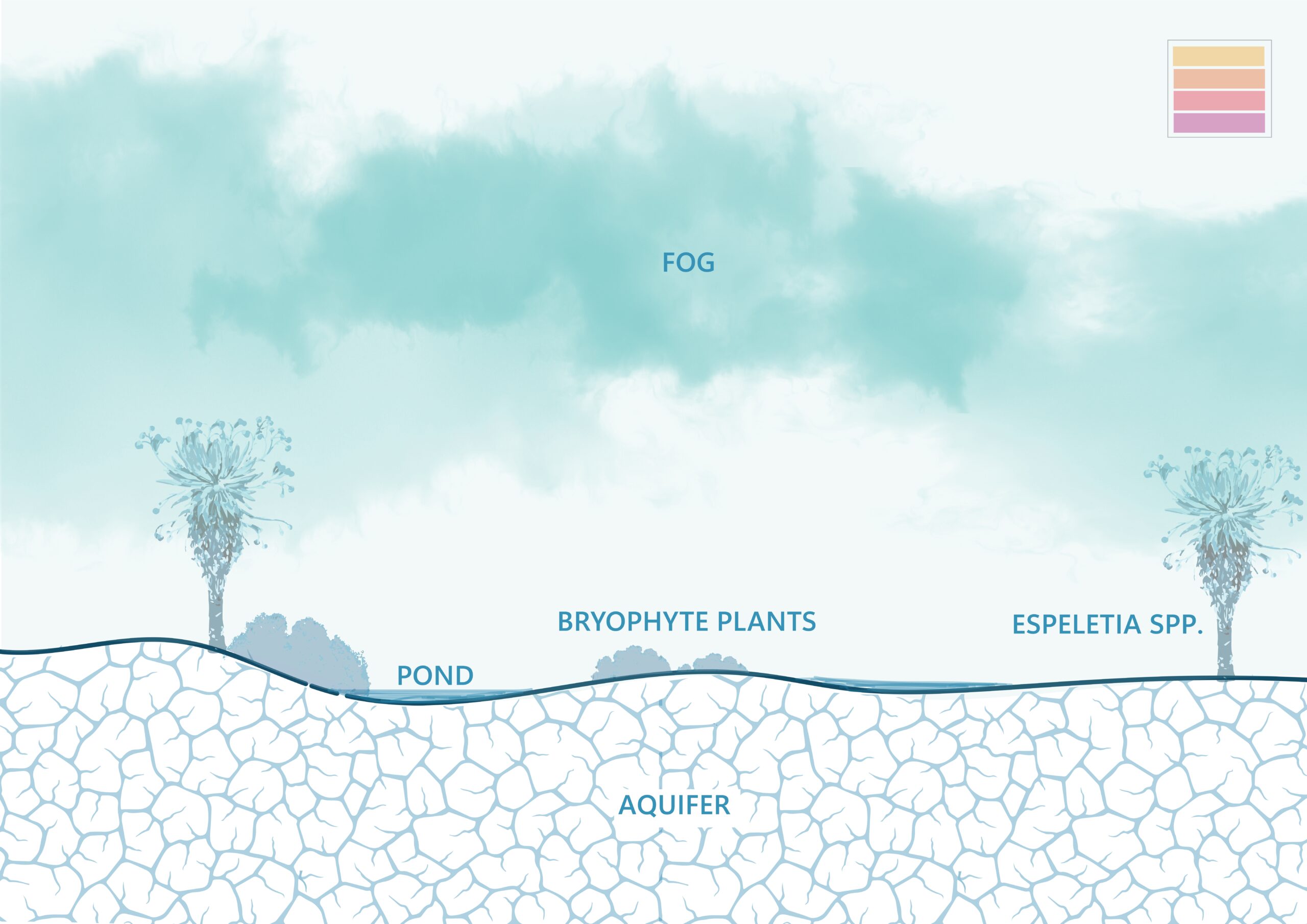
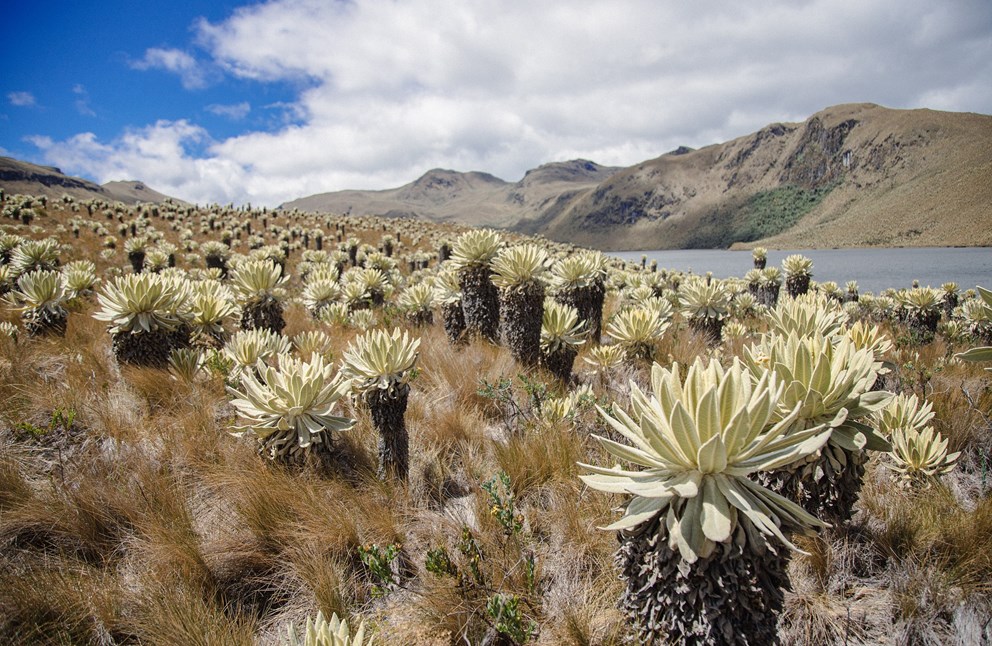
Diagram Elaborated by CO-YA-1 Team. Páramo from: https://www.caf.com/es/actualidad/noticias/paramos/
The páramo is a unique ecosystem found only in the Andean mountains. Considered a highland tropical wetland, it is one of the most important ecosystems in the world, as it provides a vital water resource for the people of Colombia. For this reason, we aim to highlight its relevance and explore it in greater depth.
Like all other ecosystems, there are several elements that take place into action, such as the fog, Espeletias, rivers, and earth.
Taking Action through reverse engineering
Layers
We aim to shift our perspective. Let’s begin by gaining a deeper understanding of how the water cycle functions in highland tropical wetlands.
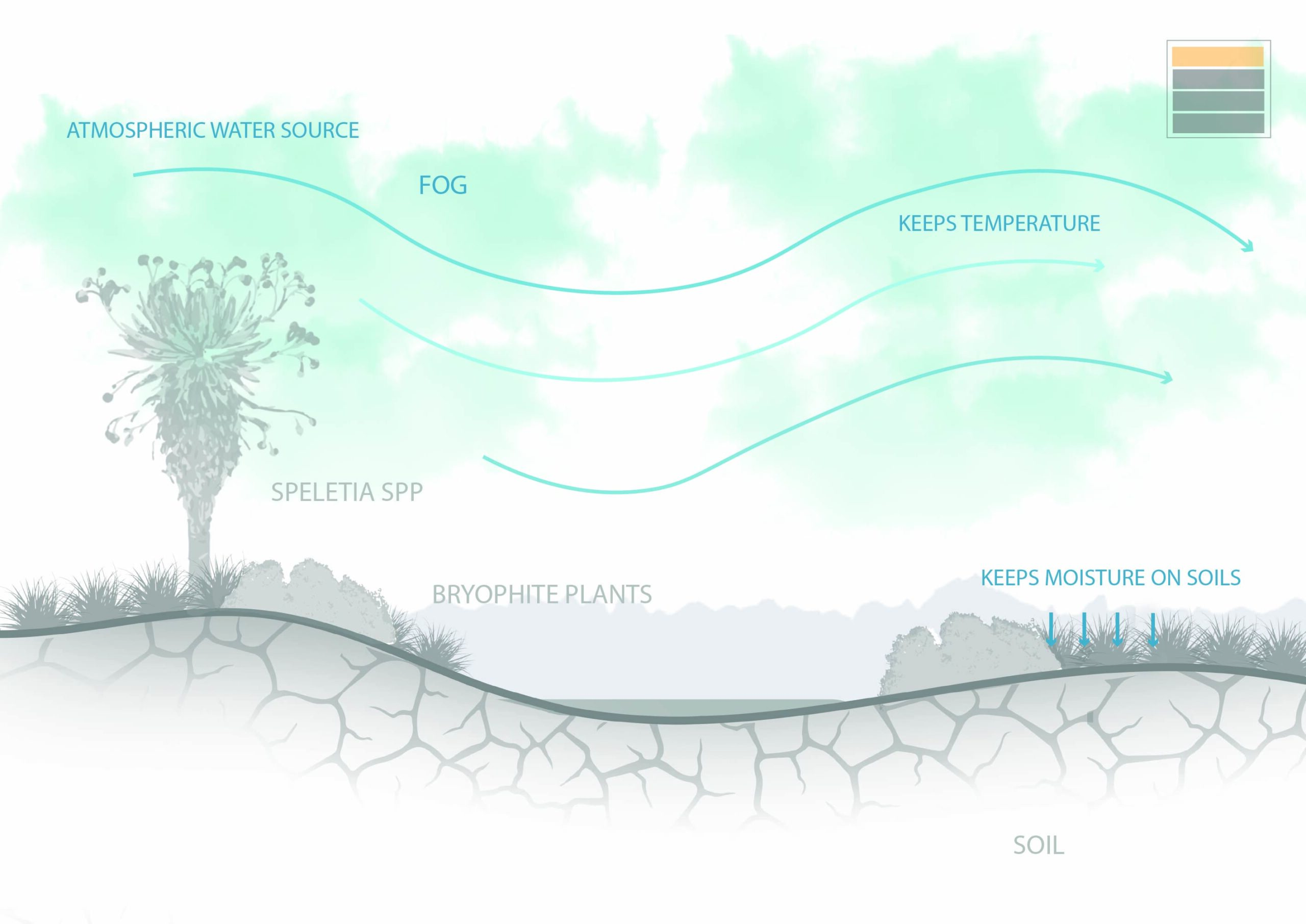
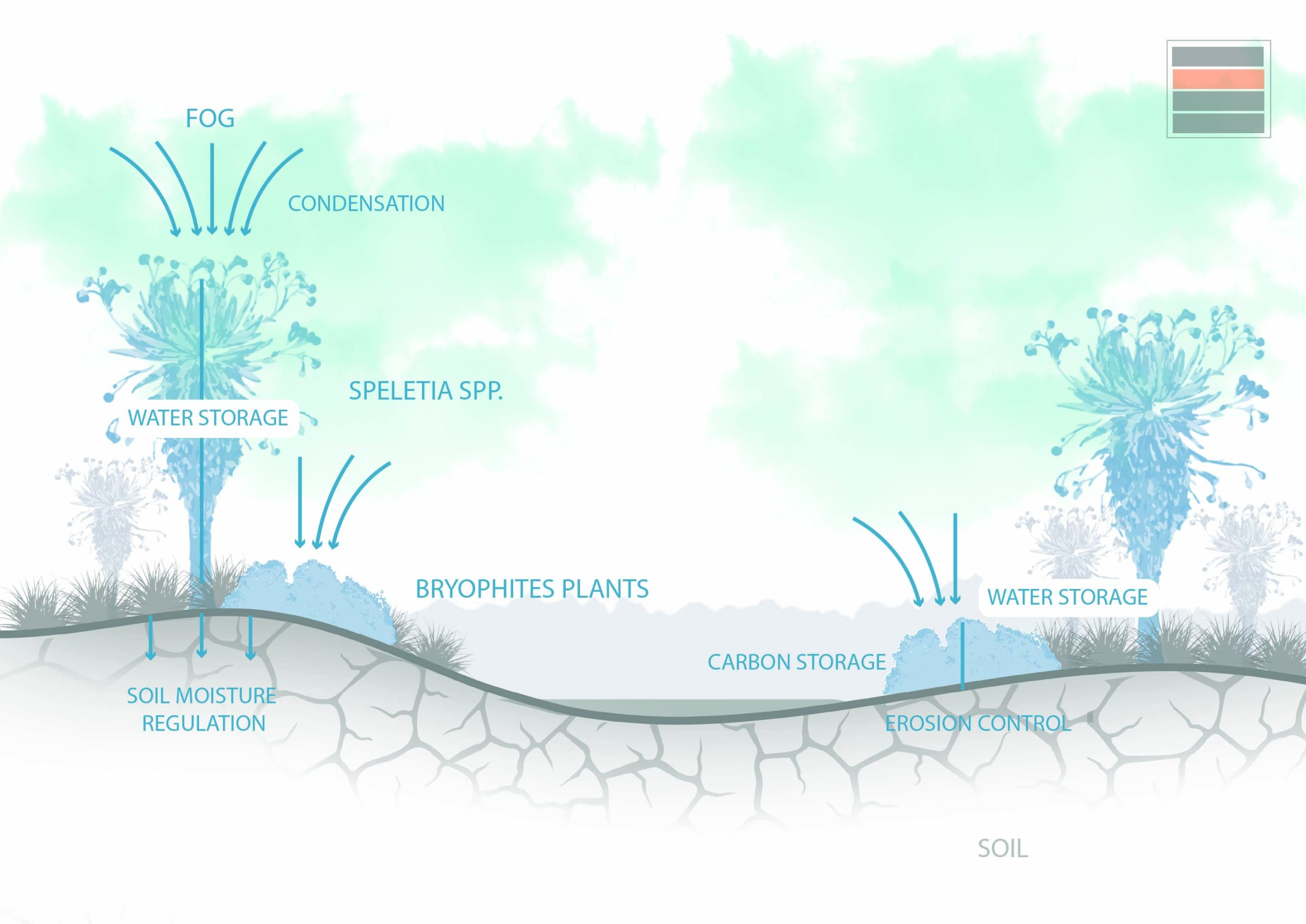
Diagrams Elaborated by CO-YA-1 Team.
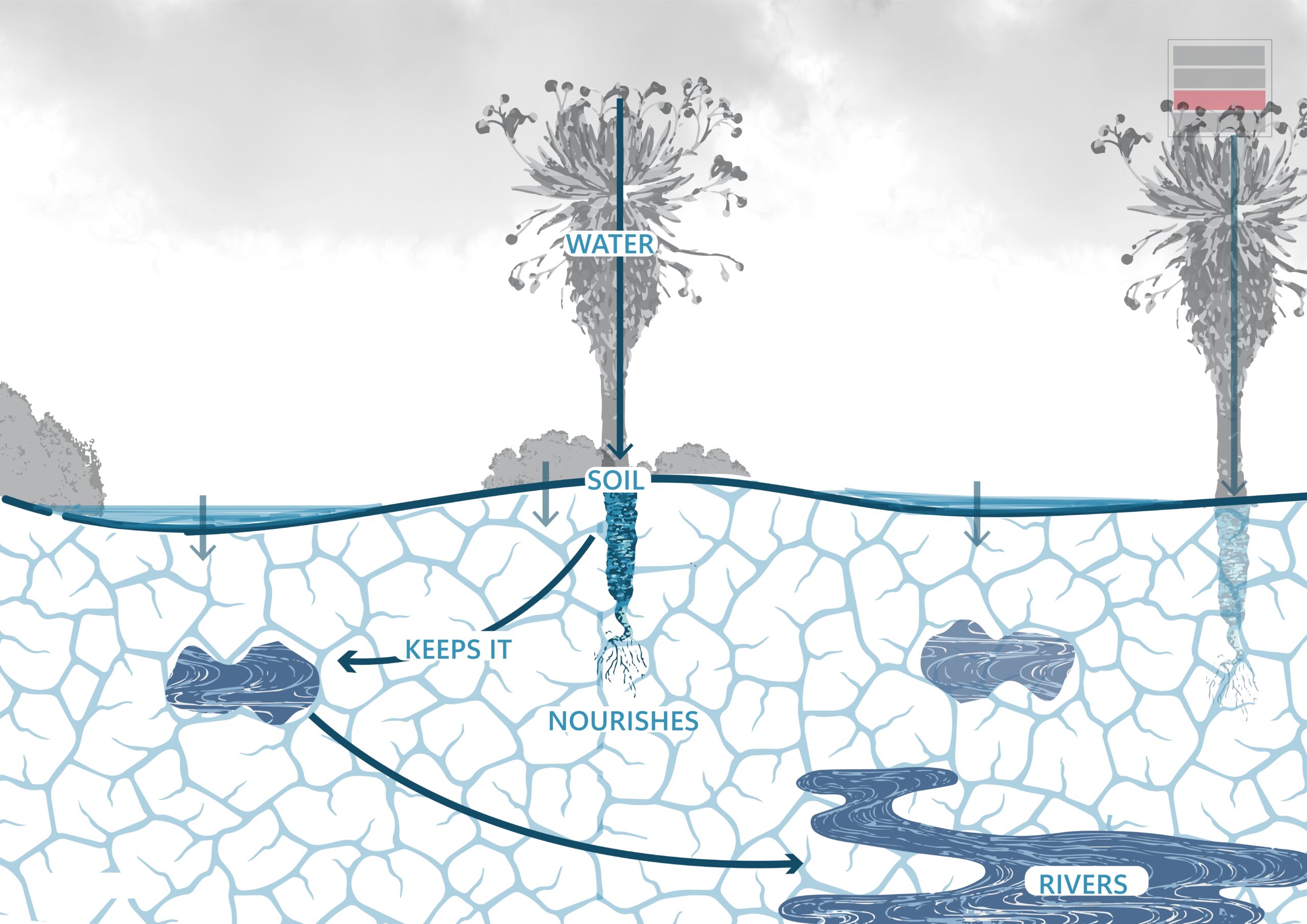
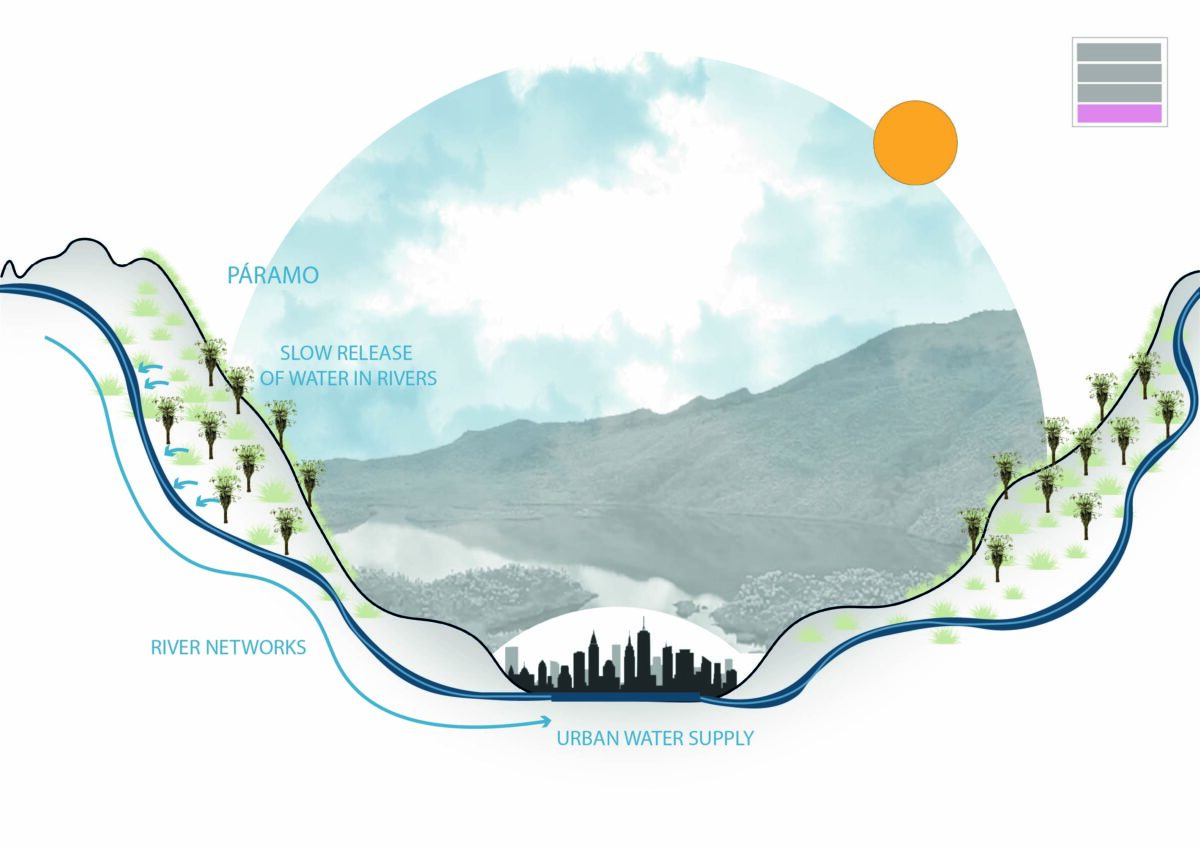
Diagrams Elaborated by CO-YA-1 Team.
As a result, we can see how all previous stages are complementary as they have a specific role balancing the environment and regulating the water cycle, making it possible for this ecosystem to function.
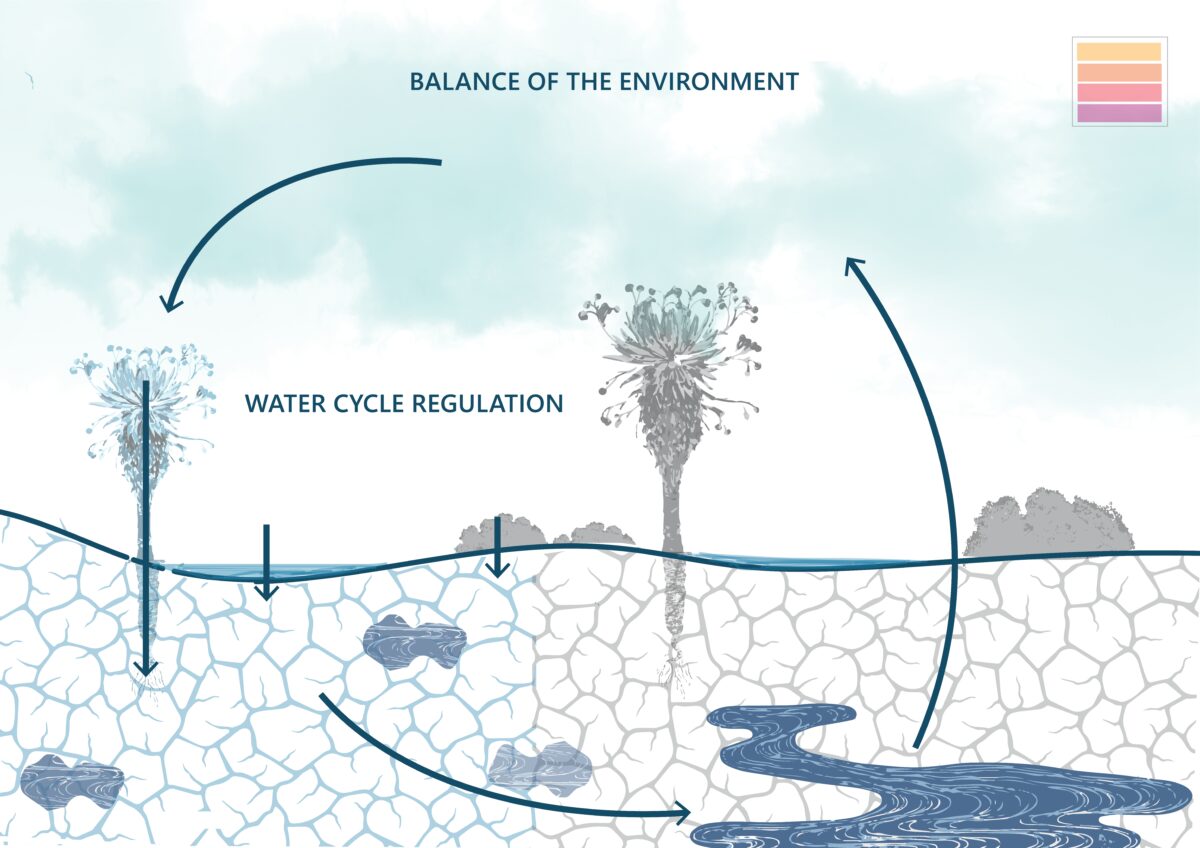
Diagram Elaborated by CO-YA-1 Team.
Proposal
Our project aims to solve one of the problems facing the Brooklyn Navy Yard sector. We are creating a pavilion where we will collect excess water through the soil, which will be treated there and then carried to containers that people will see, raising awareness of the water problem the city is facing due to the broken water cycle. With the intention of improving the water cycle, we process this water so that it can be used by people, animals, and plants, and most importantly, to return it to its fog state, which will help regulate the water cycle.
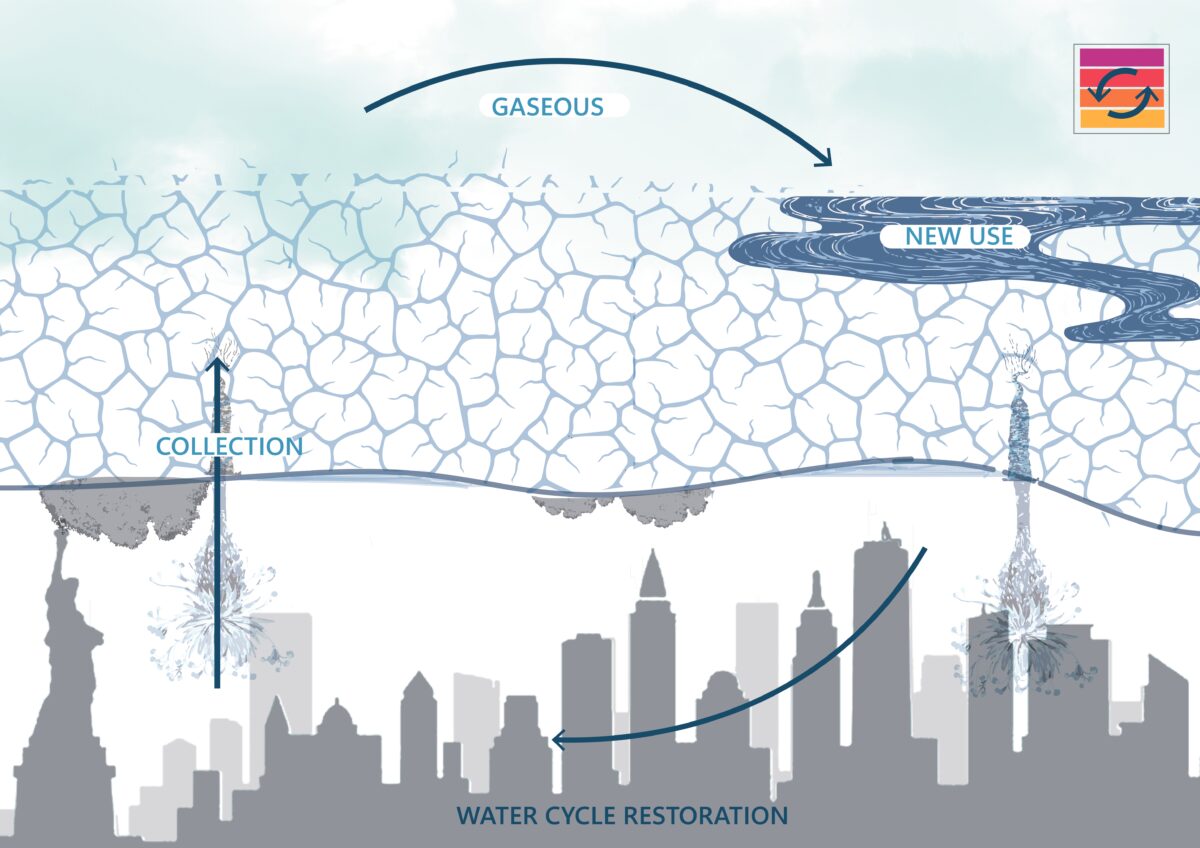
Diagram Elaborated by CO-YA-1 Team.
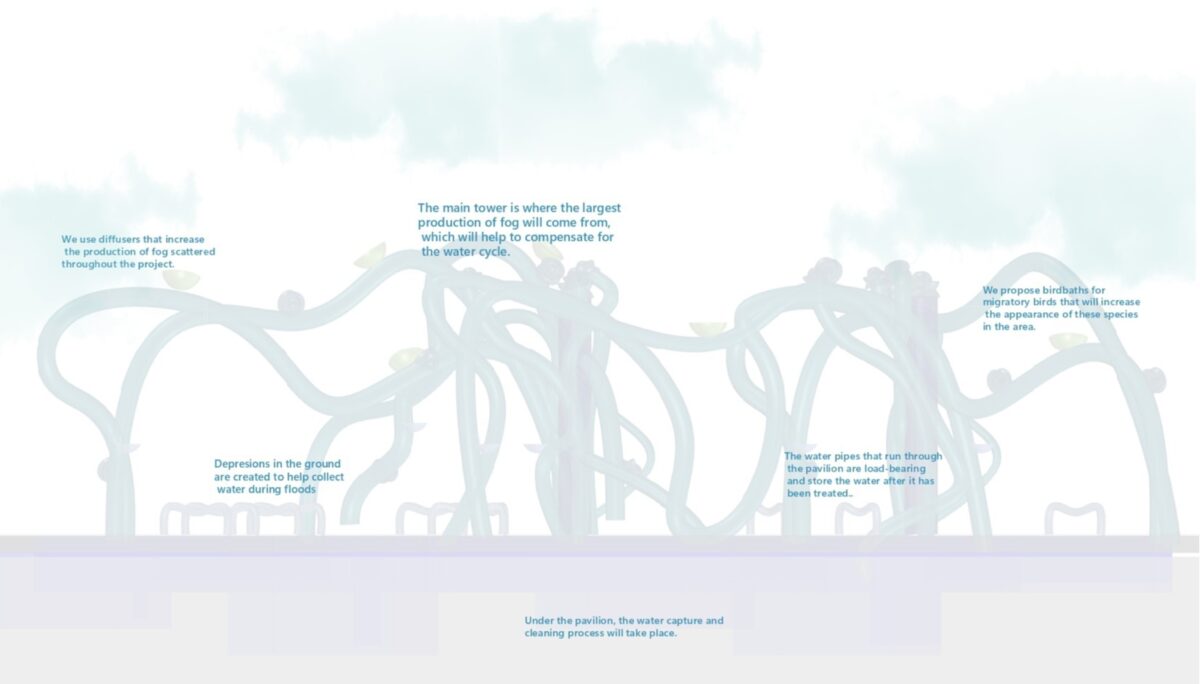
Diagram Elaborated by CO-YA-1 Team.
Social and Ecological impact
This project seeks not only an ecological impact but also a profound social transformation. By addressing the water cycle challenges at the Brooklyn Navy Yard, we aim to restore the natural flow of water in the city, reducing flooding, cleaning stormwater, and bringing balance back to the urban ecosystem. The intervention goes beyond infrastructure—it becomes a living system that reactivates migratory bird habitats, supports biodiversity, and demonstrates that urban spaces can coexist with natural processes.
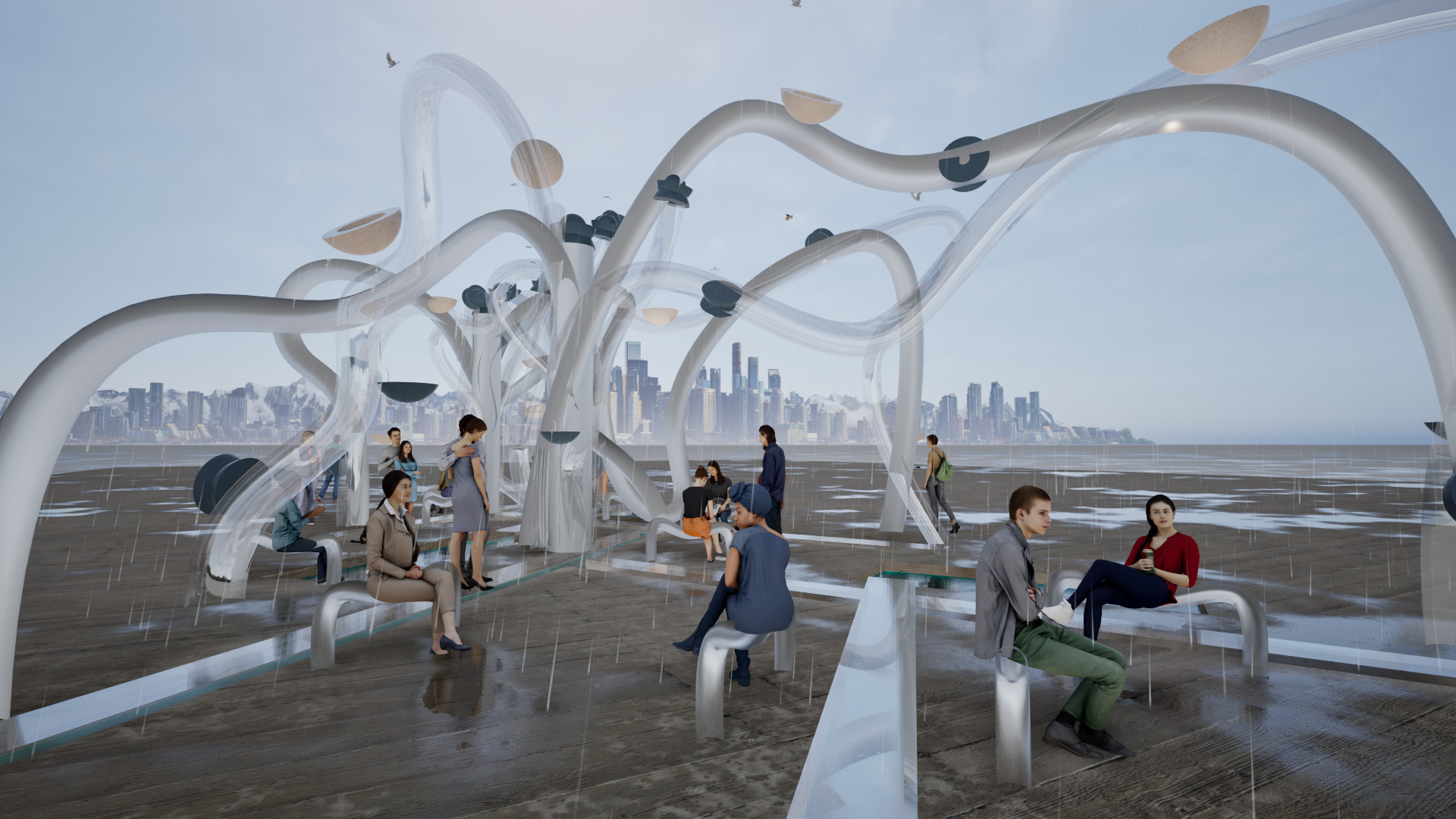
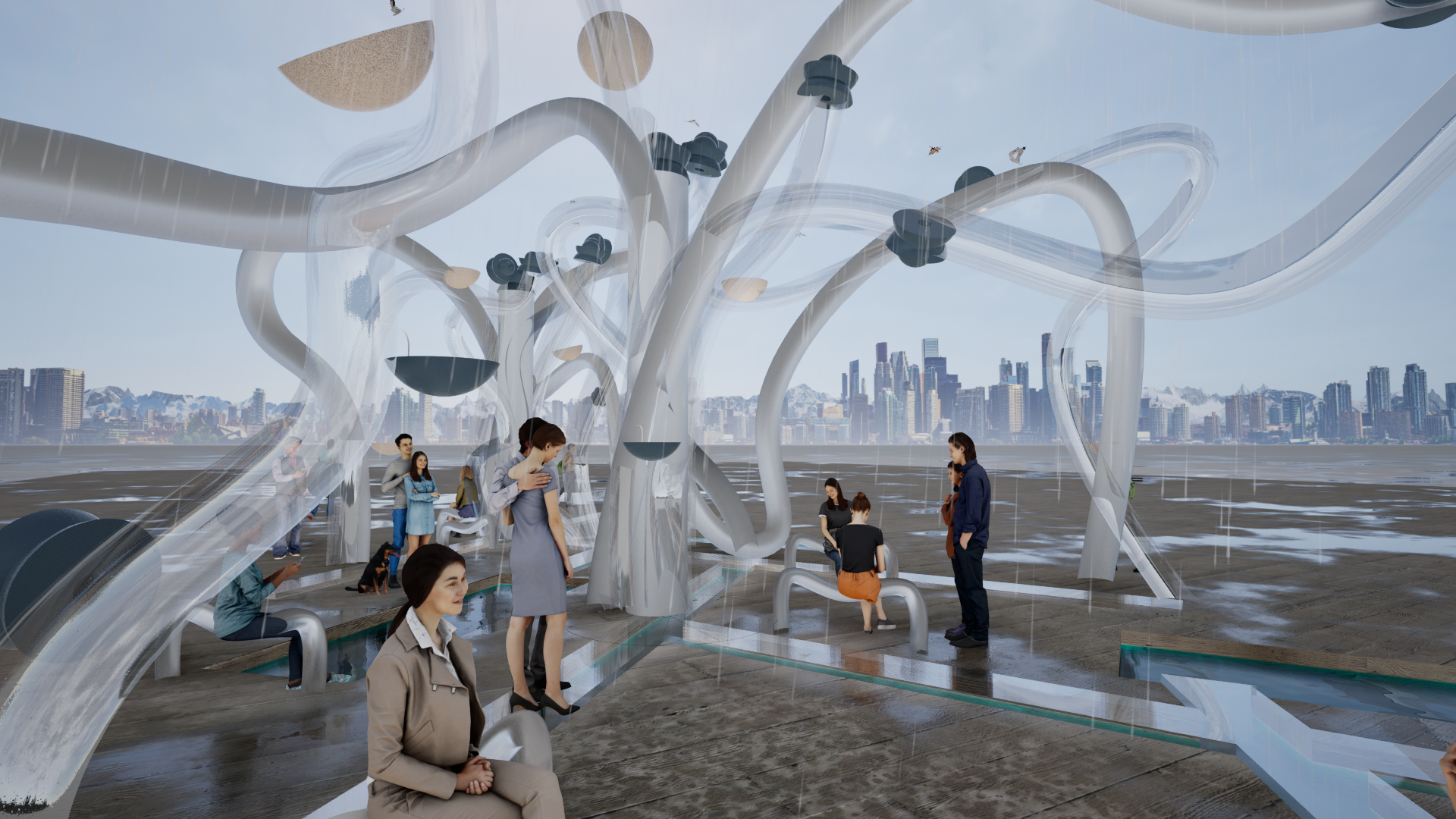
Renders Elaborated by CO-YA-1 Team.
Proposed vegetation
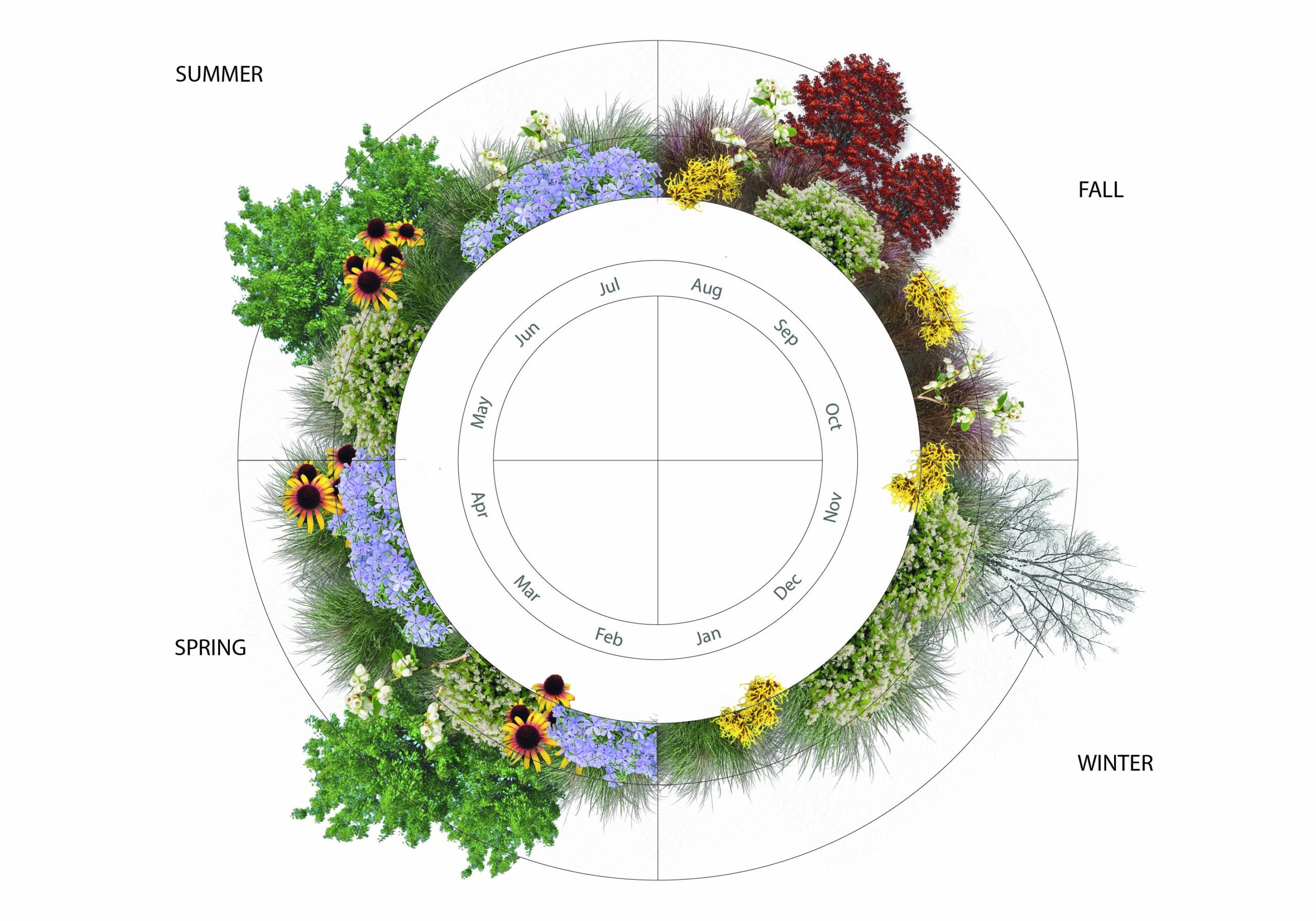
Diagram Elaborated by CO-YA-1 Team.
Acer rubrum, Vaccinium corymbosum, Ceanothus americanus, Hamamelis virginiana, Geranium maculatum
This native vegetation creates small ecosystems and biotopes that support pollinators, birds, and soil microbes all year long. By bringing back native trees, shrubs, and groundcovers, we’re restoring the natural relationships that were here long before the city existed. These plants help water soak into the ground, keep soil from washing away, and create diverse habitats that boost local wildlife. Also, their natural cycles through the seasons mean there’s always food and shelter available for animals, mostly for migratory birds.
Measurability
The inverted páramo idea is built as a repicable system that can be used in multiple urban environments. It works by copying how natural páramo ecosystems function – capturing water, storing it, and releasing it slowly over time. This creates real benefits for climate resilience, helps support local wildlife, and improves how cities manage their water. Also, the design is modular, which means it can grow and fit into existing city structures turning urban areas into living networks that actually work like natural ecosystems. The project shows how we can scale up these solutions and measure their impact, giving us a practical way to reconnect city living with the natural systems we all depend on.
If the páramo holds the memory of water, how can the city learn to remember?
Our team

Sara Valentina Chaparro
[email protected]
Universidad Nacional de Colombia, Bogotá.

Mariana Romero
[email protected]
Universidad Nacional de Colombia, Bogotá

Maria José Loaiza
[email protected]
Universidad Nacional de Colombia, Bogotá
References
- Agronet. More than Frailejones: How Páramo Plants Work. Explains how frailejones capture atmospheric moisture, conduct it to the soil, and regulate the páramo hydrological cycle. Retrieved from agronet.gov.co
- Universidad Mariana. Importance of Páramos and Frailejones. Bulletin CEI. Describes the role of frailejones in fog capture, water regulation, and the risks of climate change in páramo ecosystems. Retrieved from revistas.umariana.edu.co
- The Nature Conservancy. Páramos, the Sky’s Piggy Bank: Lessons from Latin America. Addresses páramos as regulators of the water cycle, their socio-economic role, and conservation importance. Retrieved from nature.org
- Parques Nacionales de Colombia. Frailejones Baseline Monitoring: Species Distribution, Population Features, and Pressures (PNN Chingaza 2018–2020). Provides ecological data on frailejones and their hydrological significance. Retrieved from ipt.biodiversidad.co
- Universidad Mariana. Páramos: Soil, Water, and Biodiversity. Revista CEI. Details páramo soils (porosity, water retention, acidity) and implications for ecosystem services. Retrieved from revistas.umariana.edu.co
- NYC Environmental Review. Chapter 8: Water and Sewer Infrastructure – Admirals Row Plaza. Explains how the Brooklyn Navy Yard connects to combined sewer systems and the Red Hook Wastewater Treatment Plant. Retrieved from nyc.gov
- NYC Department of Environmental Protection (DEP). Combined Sewer Overflows. Defines CSOs, why they occur in NYC, and their impact on water quality. Retrieved from nyc.gov
- Natural Resources Defense Council (NRDC). When It Rains, It Pours Raw Sewage into New York City’s Waterways. Describes how heavy storms cause sewage and stormwater overflows into NYC rivers. Retrieved from nrdc.org
- Office of the New York State Comptroller. A Partially Treated Problem: Overflows from Combined Sewers. Examines failures of combined sewer systems and their environmental impact. Retrieved from osc.ny.gov
- NYC Economic Development Corporation. Stormwater Management Studies – FiDi/Seaport Climate Resilience Master Plan. Analyzes stormwater strategies and tidal flooding risks. Retrieved from edc.nyc
